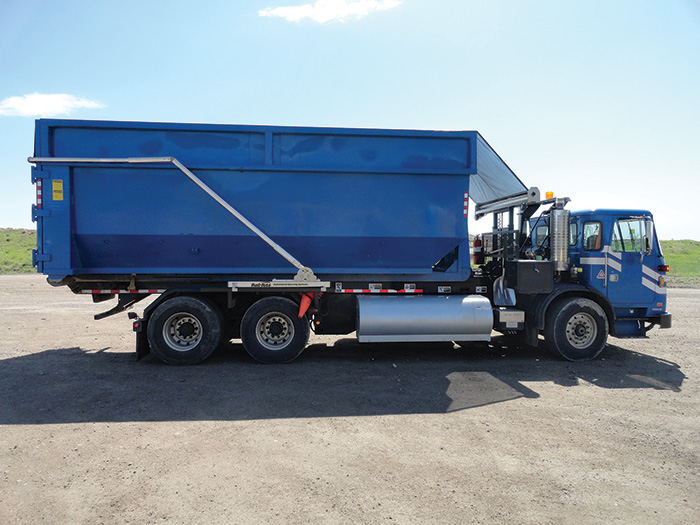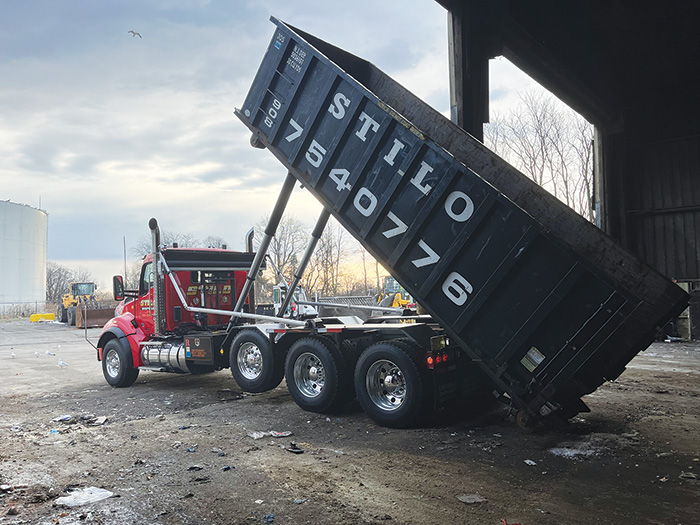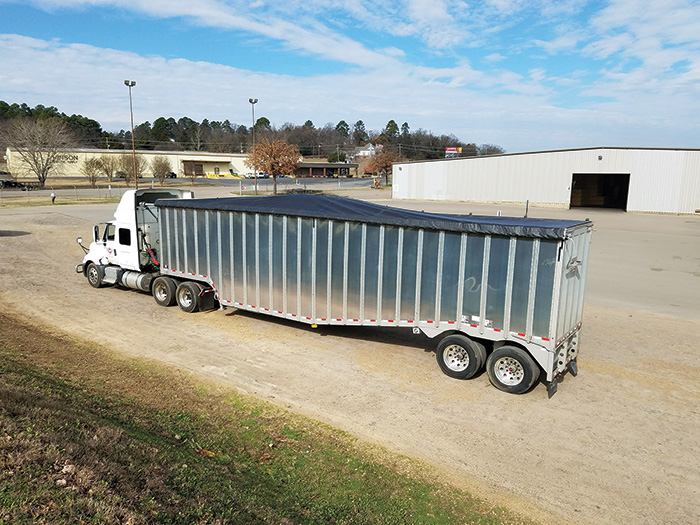Electrically operated tarp systems boost safety and efficiency for the waste industry by the way of innovative engineering, providing the necessary tools for waste haulers to operate smoothly.
By Keith Lowe and Kevin Anderson
You are already familiar with the dangers of working with containers and trailers hauling debris. So, you know that the preferred method of covering loads is a tarping system that can protect the operator and the public, all while maintaining a low cost of ownership with minimum downtime. With the advancements that have been made in the tarp industry over the years, such systems are now readily available, and having a positive impact on the waste industry.
Tarp Tech Evolution
Innovation in the early years of the tarp industry reached a fever pitch before it stagnated for some time. However, during that lull, brands continued pushing the boundaries, with remotes, one-touch, side-to-side trailer systems, and application-designed, in-house manufactured motors.
A quick walk around a tradeshow like Waste Expo will show that tarp technology has come a long way from hazardous hand tarps to the current iterations. These days, hydraulic and spring systems are the main tarp types for waste haulers, and they each come with their own set of benefits.

Image courtesy of Roll Rite, a Safe Fleet brand.

Image courtesy of Stilo Disposal.
Hydraulic Systems for Roll-off and Hooklift Applications
Hydraulic pivots help hold the tarp down on the rear of the container. Hydraulic pivots also house the system’s arms, allowing for tarps to easily go over heaped loads and leading to less tarp rips and tears. These systems might cost less money up front than their spring counterparts, but require more maintenance and eventual downtime.
Spring Systems for Roll-off and Hooklift Applications
Spring pivots have allowed for systems to require less upfront costs, less maintenance, and less downtime, while being able to cover a wide range of container sizes. Since tarp rollers are housed in the towers in these systems, they are protected from damage. Though tarp deployment can be an issue on windy days and on slopes, progress is being made to address these issues (as you will read later).
Side-to-Side Systems for Transfer Trailers
Thoughtfully automated controls and engineered motors have taken user experience to the next level. When combined with innovative spring-loaded pivot and knuckle technology, it carries the tarp axle over heaped loads and tightly secures it under locking accessories, allowing a tarp to climb over a waste transfer trailer to cover the load—which would have otherwise required massive effort on the user’s part. Operators can now avoid the back, shoulder, arm, and other injuries associated with these hard tasks.
The Impact of Tarp Innovation
In the quest to achieve the ideal solutions, tarp makers strive to address critical pain points like excessive maintenance and frequent part replacement, while having a positive impact on safety, productivity, and cost-effectiveness.
Safety
Truck and trailer tarp systems have controls near the front of the vehicle with the option of remote control, allowing the user to focus on overhead obstacles while seeing all aspects of the system during operation.
With such controls, operators do not have to work in the way of oncoming traffic. Remote operation comes in handy when loading and covering hazardous material at specific landfills or dump sites and shields operators from exposure to harsh weather conditions and potential injuries.
The risk of injury is reduced since minimal physical force is needed to operate the tarp. The risk of falling is also minimized, since there is no need to climb atop equipment (up to 15′ off the ground) to manually maneuver a tarp into place. These ergonomically designed systems bode well for injury-prone, older drivers, or those with physical limitations.

Productivity
When it comes to fleets of all types, time is money, and this acutely applies to the waste industry. Easier, quicker tarp deployment means less time and effort spent covering a load and less time outside of the vehicle. The efficiency of a tarp system increases a driver’s ability to make additional trips to the disposal facility.
The right automated systems for your applications can be viewed as an investment in a worker’s well-being and future productivity. Less time exposed to traffic, the elements, and hazardous loads means less time dedicated to injuries, recovery, and downtime. In fact, it has been shown these types of systems can incentivize interest in working for an invested fleet and reduce employee turnover.
Cost-Effectiveness
The latest generation of tarp systems are long-term investments, more so than one-time expenditures. By promoting a safer workplace that prevents unnecessary costs stemming from injuries, property damage, worker’s compensation, and downtime, these systems can pay for themselves in time.
Not only does the increased productivity open opportunities for revenue growth, but fleets can also count on the immense safety improvements to stay compliant and avoid fines from regulatory bodies.
“With automated tarping systems … no longer do they (drivers) need to climb on equipment or potentially put themselves in harm’s way from material that may be sticking out from the dumpster when having to tarp. In addition, the value over the investment lifecycle becomes increasingly evident, showcasing not just a commitment to progress, but a strategic investment in a sustainable future…”
—Julie Stilo, President of Stilo Disposal
What is On the Horizon
The tarp industry is not short on innovation—from remote-controlled automatic tarp systems that allow users to operate from a safe distance to tarp motors that can “climb” over heaped mounds of waste to cover trailers. Development is under way on the next generation of powered pivot technology with tarp deployment and hold down power on par with any hydraulic system, alleviating the concerns of tarps blowing up and keeping the load secure and contained on a windy day. The next generation of tarp systems promises even more ingenuity for safer waste and refuse fleets and we are ready to roll with it, the right way. | WA
Keith Lowe is a 38-year waste industry veteran who began his career in landfills, transferring to the hauling side and eventually to manufacturing. He has excelled in sales, safety, and operations during the first half of his career. This experience gave him a solid foundation when transitioning to a sales role in waste equipment manufacturing. Keith understands the importance of safety and the needs of the end user. He can be reached at (713) 817-7726 or e-mail [email protected].
Headquartered in Gladwin, MI, Roll Rite® A Safe Fleet Brand, designs and manufactures application-specific automated and semi-automated tarping systems, motors, controls and tarps for open body dump trucks, open-top trailer, and detachable containers serving the Construction, Agriculture, Waste and Recycling markets. With the additions of Automatic Load Covering and Pulltarps® manufacturing acquisitions, Roll-Rite has one of the most complete product portfolios available to customers. Roll-Rite systems quickly and reliably contain and protect payloads, create a safer working environment for drivers, and maximize return-on-investment by increasing revenues and reducing the cost of ownership. For more information, visit www.rollrite.com.
